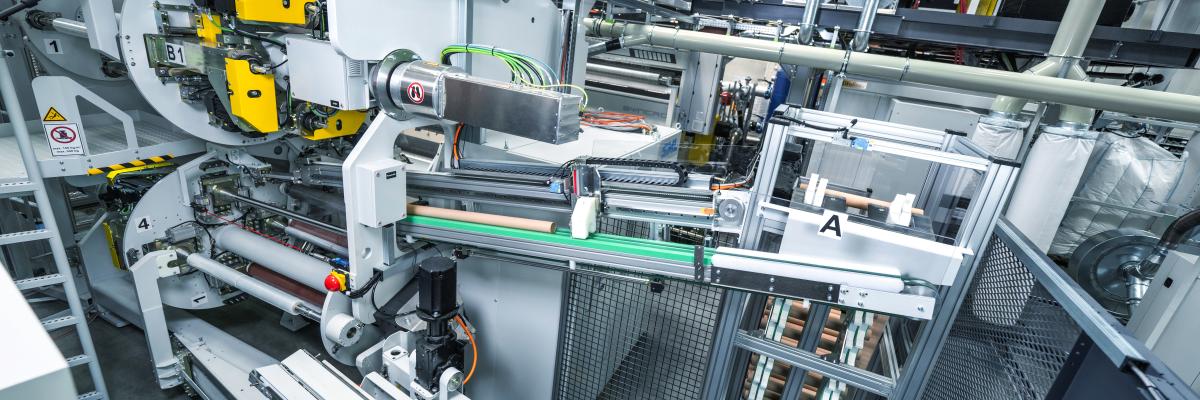Breadcrumb
Performance Test: PCR and NanoLayer in stretch film production
The basic idea of NanoLayer technology in stretch film production is to create thin, waffle-like structures by repeatedly layering the melt from at least two extruders. A central question arises in connection with the use of post-consumer resin (PCR): Does the use of PCR work when producing these layers? SML has made extensive trials to get the answer.
NanoLayer technology entered the market some years ago. The centrepiece of this technology is a feedblock which enables a significantly higher number of layers than conventional feedblocks. Together with Cloeren, SML has successfully installed feedblocks for up to 67 layers. So which effects has the use of PCR in combination with NanoLayer technology?
Two identical PowerCast XL test lines
To answer this question, SML teamed up with Brazilian resin manufacturer, Braskem, and devised a practical test plan to compare the use of PCR with conventional and NanoLayer technology in regular production conditions. In the next step, SML set up two identical PowerCast XL, 9 up cast stretch film lines with 7 + 1 extruders in the Technology Centre of its headquarters in Austria. The only difference between the two lines: The number of layers on the feedblock. The conventional extrusion line was designed for 13 layers, whereas the line with the nanolayer feedblock produced 67 layers.
Extrusion runs with a multitude of different parameters
The trial plan involved various recipes, line speeds, types of PCR, as well as a multitude of other parameters. Finally, more than 100 different test runs had been done, but the proportion of PCR always remained at 30 % altogether. An in-depth analysis of more than 1,000 lab tests followed the test runs.

The Result: No limits!
“We did not see or detect any aspect which would restrict the film performance or production parameters using the same amount and quality of PCRs on nanolayer equipment compared to conventional co-extrusion. As you can see from the charts, the ultimate elongation and tear propagation are at the same level,” SML Product Manager Thomas Rauscher sums up the test.
Redlham, 24.10.2024


